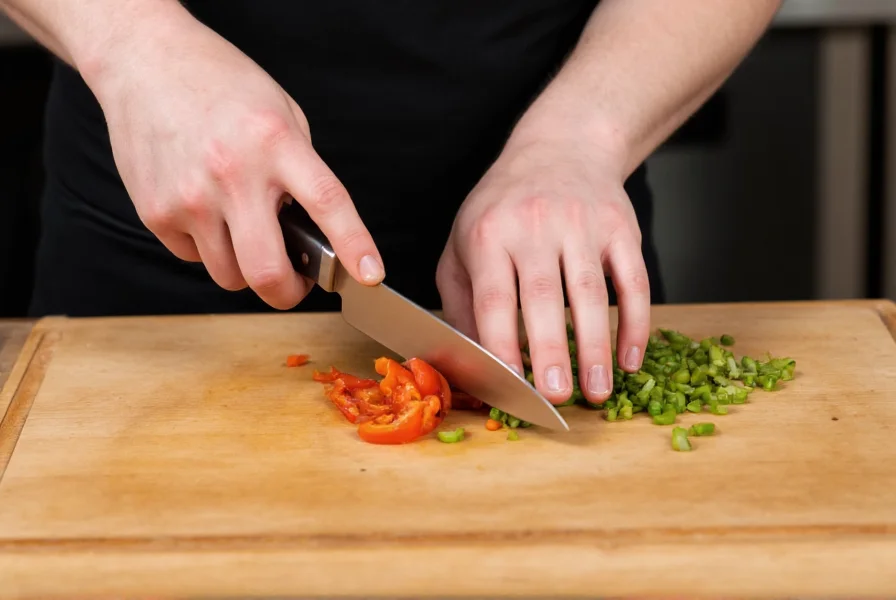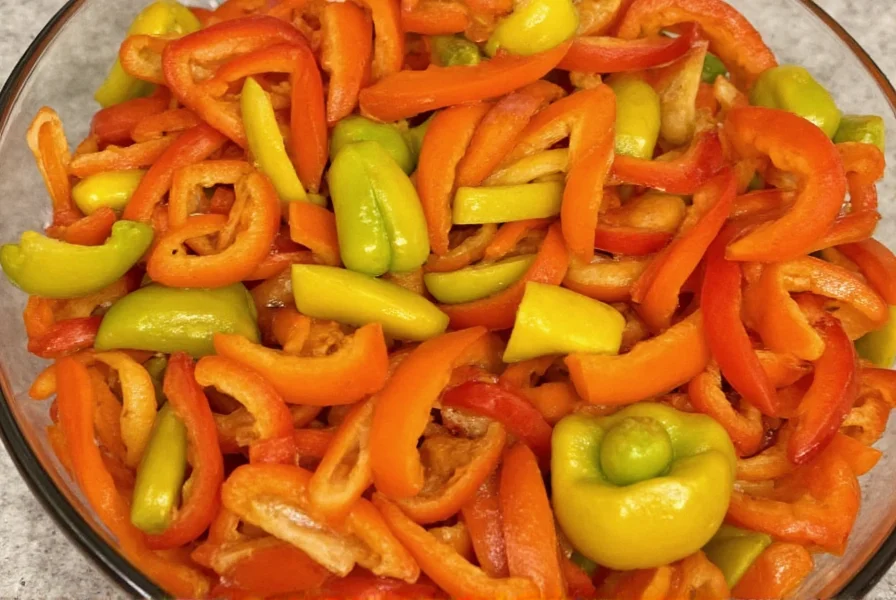Understanding proper pepper preparation techniques elevates your cooking from amateur to professional level. When recipes call for "diced pepper," they're specifying a particular cut that impacts both cooking time and final presentation. Let's explore everything you need to know about this fundamental culinary technique.
Types of Peppers Ideal for Dicing
Bell peppers remain the most common choice for dicing due to their thick walls and consistent shape. However, other varieties work well too:
| Pepper Type | Best For | Dicing Difficulty |
|---|---|---|
| Bell peppers (all colors) | Soups, stir-fries, salads | Easy |
| Poblano peppers | Southwestern dishes, stuffed peppers | Moderate |
| Jalapeño peppers | Salsas, spicy dishes | Moderate (use gloves) |
| Serrano peppers | Hot sauces, authentic Mexican cuisine | Difficult (extreme caution) |
Step-by-Step Pepper Dicing Technique
Professional results require proper technique. Follow these steps for perfect diced peppers every time:
- Wash and dry the pepper thoroughly
- Cut off the top and bottom sections
- Stand the pepper upright and slice downward to remove the core and seeds
- Lay each flat section skin-side down on your cutting board
- Cut lengthwise into strips of your desired width
- Rotate and cut crosswise to create uniform cubes
For hot peppers like jalapeños or serranos, always wear gloves during preparation and avoid touching your face. The capsaicin oils can cause severe irritation to eyes and sensitive skin.

Diced vs. Chopped vs. Minced: Understanding the Differences
Many home cooks use these terms interchangeably, but professional kitchens maintain clear distinctions:
- Diced peppers (1/4"-1/2" cubes) - uniform size for even cooking
- Chopped peppers (irregular 1/2"-3/4" pieces) - less precise, faster preparation
- Minced peppers (1/8" or smaller) - nearly paste-like consistency
Substituting one cut for another affects cooking time and texture. Diced peppers maintain their shape in dishes like fajitas, while minced peppers virtually disappear into sauces.
Culinary Applications of Properly Diced Peppers
Diced peppers serve specific purposes in various cooking methods:
- Stir-fries - uniform size ensures all pieces cook simultaneously
- Omelets and scrambled eggs - small cubes distribute evenly without overwhelming
- Soups and stews - consistent texture throughout the dish
- Salsas - proper dicing creates the ideal chunky texture
- Stuffing mixtures - even cooking with other vegetables
When preparing how to dice bell peppers properly for specific recipes, consider the cooking time. Longer-cooking dishes can handle slightly larger dice, while quick-cooking applications require smaller, more uniform pieces.
Storage Tips for Pre-Diced Peppers
Prepping peppers in advance saves valuable cooking time. Follow these storage guidelines:
- Store in airtight containers with a paper towel to absorb excess moisture
- Refrigerate for up to 4 days for best quality
- Freeze for longer storage (up to 6 months) - spread on baking sheet first, then transfer to freezer bags
- Never store diced hot peppers with mild peppers to prevent flavor transfer
Understanding storing diced peppers properly maintains both flavor and texture. The moisture content in peppers makes them particularly susceptible to becoming soggy when stored incorrectly.
Nutritional Benefits of Diced Peppers
Dicing peppers doesn't affect their nutritional profile, but it does impact how they're used in healthy cooking:
- Red bell peppers contain nearly 3x more vitamin C than green varieties
- All colors provide significant vitamin A and antioxidants
- Diced peppers add volume and nutrients without excess calories
- Smaller dice increases surface area, potentially enhancing nutrient absorption
Common Pepper Dicing Mistakes to Avoid
Even experienced cooks make these errors when pepper dicing technique:
- Using a dull knife (causes slipping and uneven cuts)
- Not removing all seeds and membranes (affects texture)
- Cutting inconsistent sizes (leads to uneven cooking)
- Handling hot peppers without protection
- Washing peppers after cutting (dilutes flavor)
Mastering the Art of Pepper Preparation
Perfecting your different pepper cuts explained technique transforms ordinary dishes into restaurant-quality meals. The uniformity of diced peppers affects not just appearance but cooking chemistry—pieces of consistent size cook at the same rate, creating balanced flavor distribution throughout your dish.
Whether you're preparing a simple weekday stir-fry or an elaborate holiday stuffing, taking time to properly dice your peppers pays dividends in both presentation and taste. Remember that practice improves speed and precision—what takes five minutes initially will soon become a quick, automatic part of your cooking routine.
Frequently Asked Questions
What's the difference between diced and chopped peppers?
Diced peppers are cut into precise, uniform cubes (typically 1/4"-1/2" square), while chopped peppers are irregular pieces of varying sizes. Diced peppers cook more evenly and provide consistent texture in dishes, making them preferable for recipes where appearance matters.
How can I dice peppers quickly without sacrificing quality?
Use a sharp chef's knife and proper technique: remove top/bottom, cut into flat sections, then slice uniformly. Practice your knife skills regularly to build muscle memory. For large quantities, consider using a mandoline slicer with a dicing attachment, but always use the safety guard to prevent injury.
Why do my diced peppers become soggy when stored?
Peppers release moisture as they sit. To prevent sogginess, store diced peppers in an airtight container lined with a paper towel that absorbs excess moisture. Change the paper towel daily if storing longer than 24 hours. Never wash peppers after cutting, as this introduces additional moisture.
Can I freeze diced peppers for later use?
Yes, you can freeze diced peppers successfully. Spread them in a single layer on a baking sheet to flash-freeze, then transfer to freezer bags. This prevents clumping. Frozen diced peppers work well in cooked dishes like soups and stews but will be too soft for raw applications like salads after thawing.
How do I safely dice hot peppers without burning my skin?
Always wear disposable gloves when handling hot peppers. Work in a well-ventilated area, and avoid touching your face. After preparation, clean your knife and cutting board thoroughly with soapy water. If you experience skin irritation, apply milk or a dairy product to neutralize the capsaicin oils.











 浙公网安备
33010002000092号
浙公网安备
33010002000092号 浙B2-20120091-4
浙B2-20120091-4